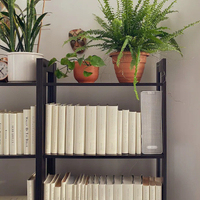Are rainbow-organized bookshelves an outdated trend? Experts suggest they’re past their shelf life
It’s time to close the book on this once-popular organizing trend, experts urge
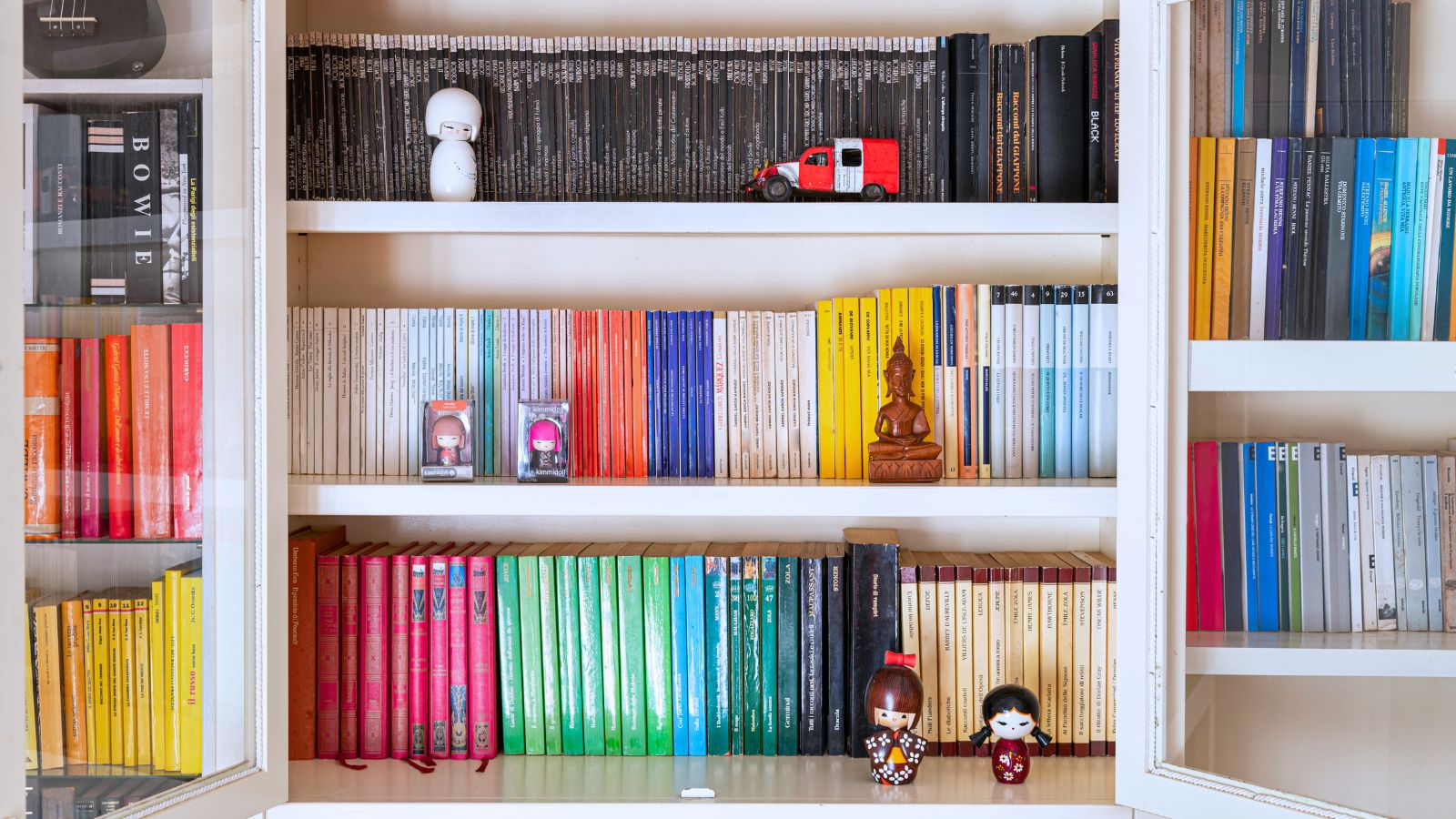

There was a moment in time when you couldn’t log into social media without seeing a picture of a Pinterest-perfect rainbow-organized bookshelf – usually in height and alphabetical order too.
No matter how pleasing they might have been, professional organizers suggest that we are finally seeing the back end of this trend, with more inventive ways of styling a bookcase on people's radar.
This is why the experts are finally closing the book on rainbow-organized bookshelves and how to better organize a bookshelf.
Are rainbow-organized bookshelves outdated?
With so many bookshelf ideas to pick from it is hard to decide the best way to keep your books neat and easy to sort through. However, going for the multi-color rainbow look is not one of them. In fact, it is often seen as the counter to the bookshelf wealth trend.
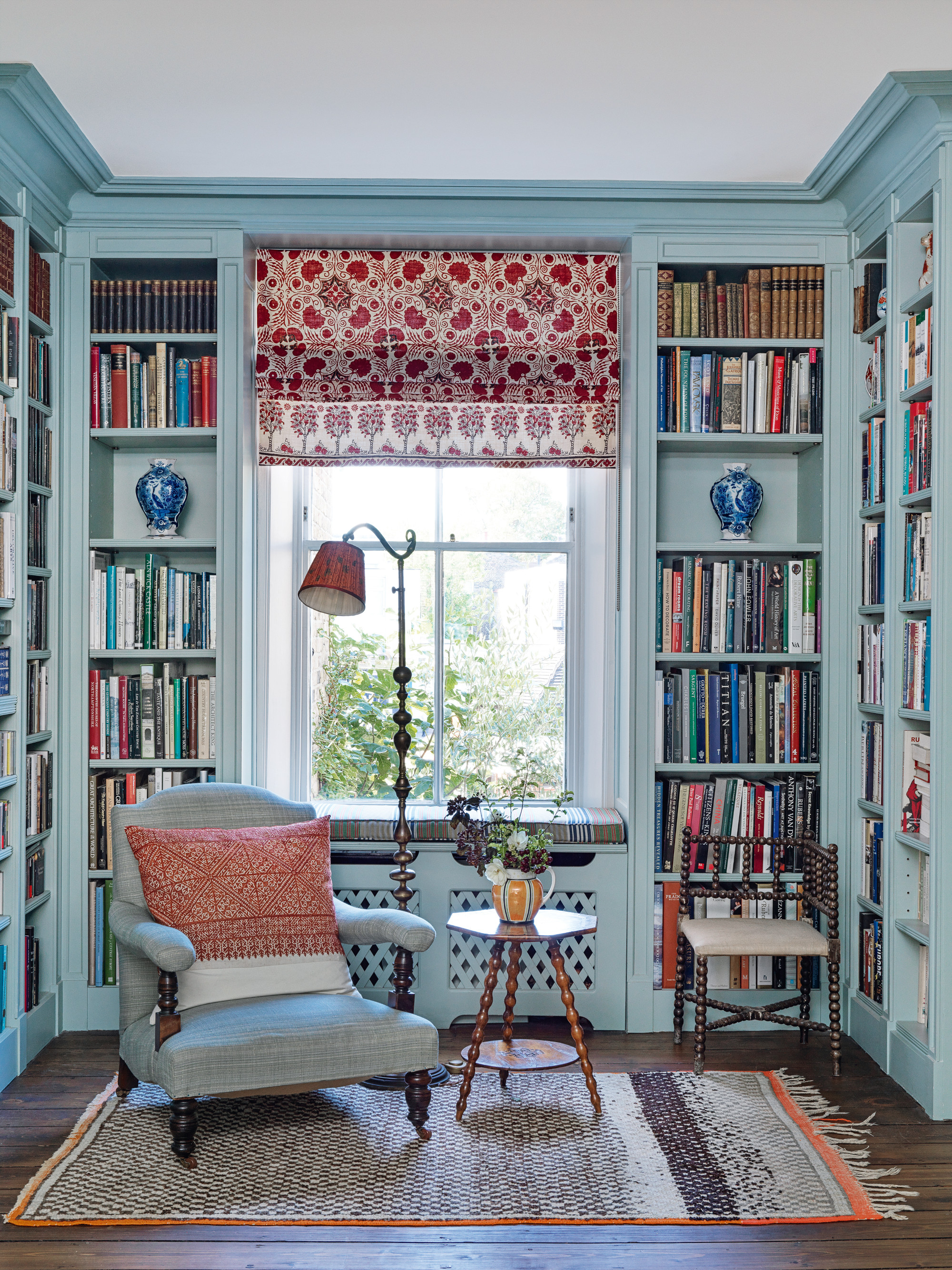
Although this organizing trend certainly made a big impact and helped to make even the blandest of bookcases a statement, it was regularly hounded for being impractical. They made it trickier to find the right title or author while splitting up books of the same series, for instance.
It might still be a great way of organizing children's books for a fun pop of color when designing children’s bedrooms, or maybe even organizing cookbooks where we rarely have complete series, but for a regular shelf? It is best left in the past.
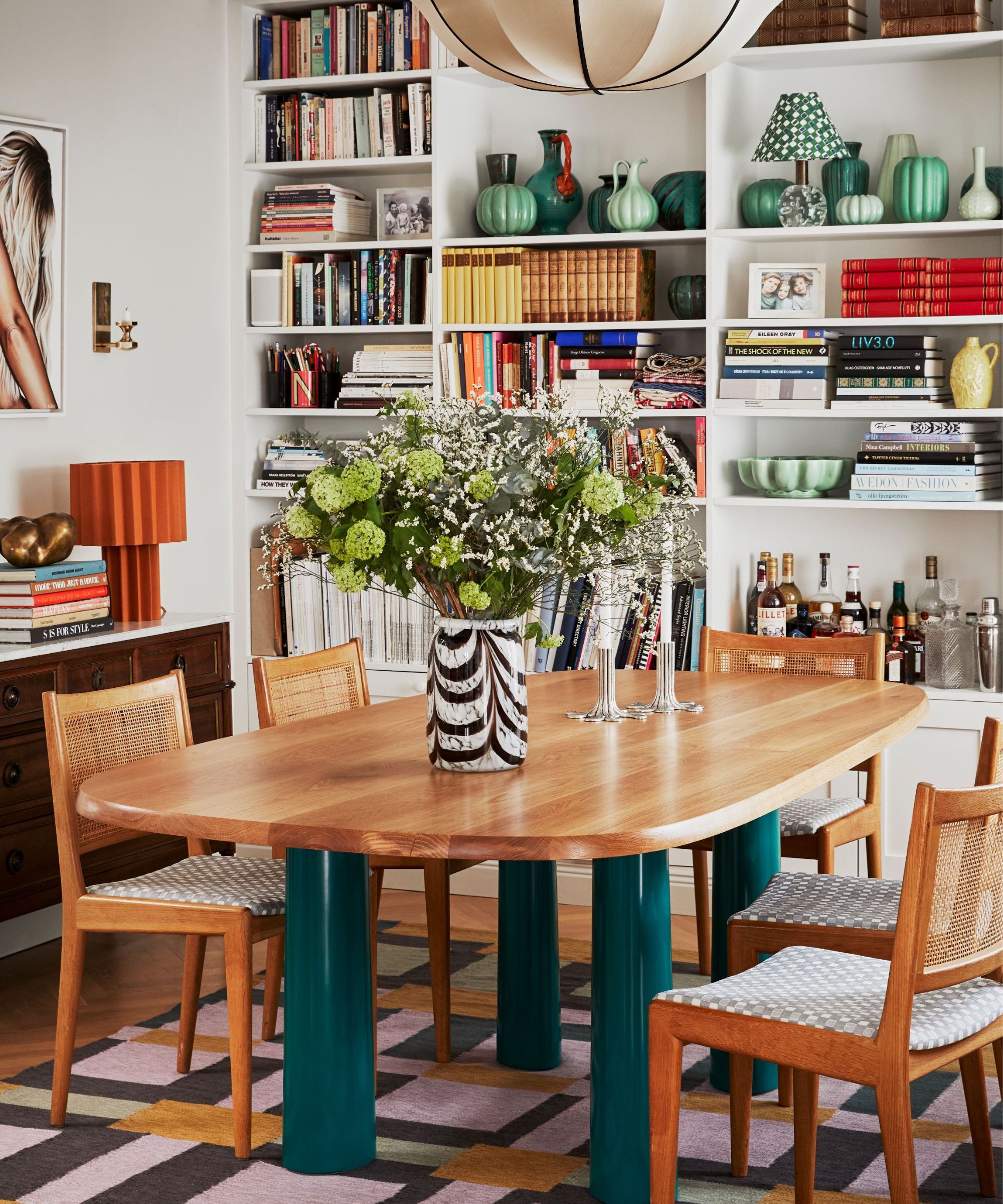
But what should we be doing instead? Barbara Brock, professional organizer, home stager, and past president of the RESA Staging Association suggests that the trend has pivoted towards uniformity rather than contrast:
‘A trend I am continuing to see in book organizing is covering the actual books with the same-colored book jacket providing a cohesive color theme,’ she begins. ‘I find this trend pleasing to the eye from a color organization perspective.
‘For most bookshelves, a decorative approach is more appealing. I like the approach of covering the actual books with the same-colored jacket for a few reasons. First, it’s cohesive. Second, you are selecting the color palette you want to showcase.’
This trend has become so prominent that you can now order custom dust jackets for books with a cohesive cover, and the name and author printed in often beautiful lettering, so it is still easy to find the book you need.
Personalized Book Cover Sets | From $60 at Etsy
These simple book cover dust jackets instantly make any bookshelf look uniform and expensive.
If this approach is not for you, however, and you still want to celebrate the original art you can still make a feature with how you arrange the books, rather than the order you pick, adds Audrey Scheck, professional interior designer:
‘While they were trendy, they might not suit everyone’s long-term taste. We tend to reserve rainbow bookshelves for spaces like kids’ rooms and play areas. However, for other settings, there are numerous alternative approaches to consider. Our preferred method involves mixing vertical and horizontal stacks of books. This technique not only adds visual interest but also prevents shelves from appearing too uniform,’ she shares.
‘Additionally, we’re fond of incorporating various objects among the books to decorate shelves – think framed artwork, vases, or decorative boxes. This mingling of items injects personality into the display, fostering a more dynamic and personalized aesthetic.’
How to arrange a bookshelf
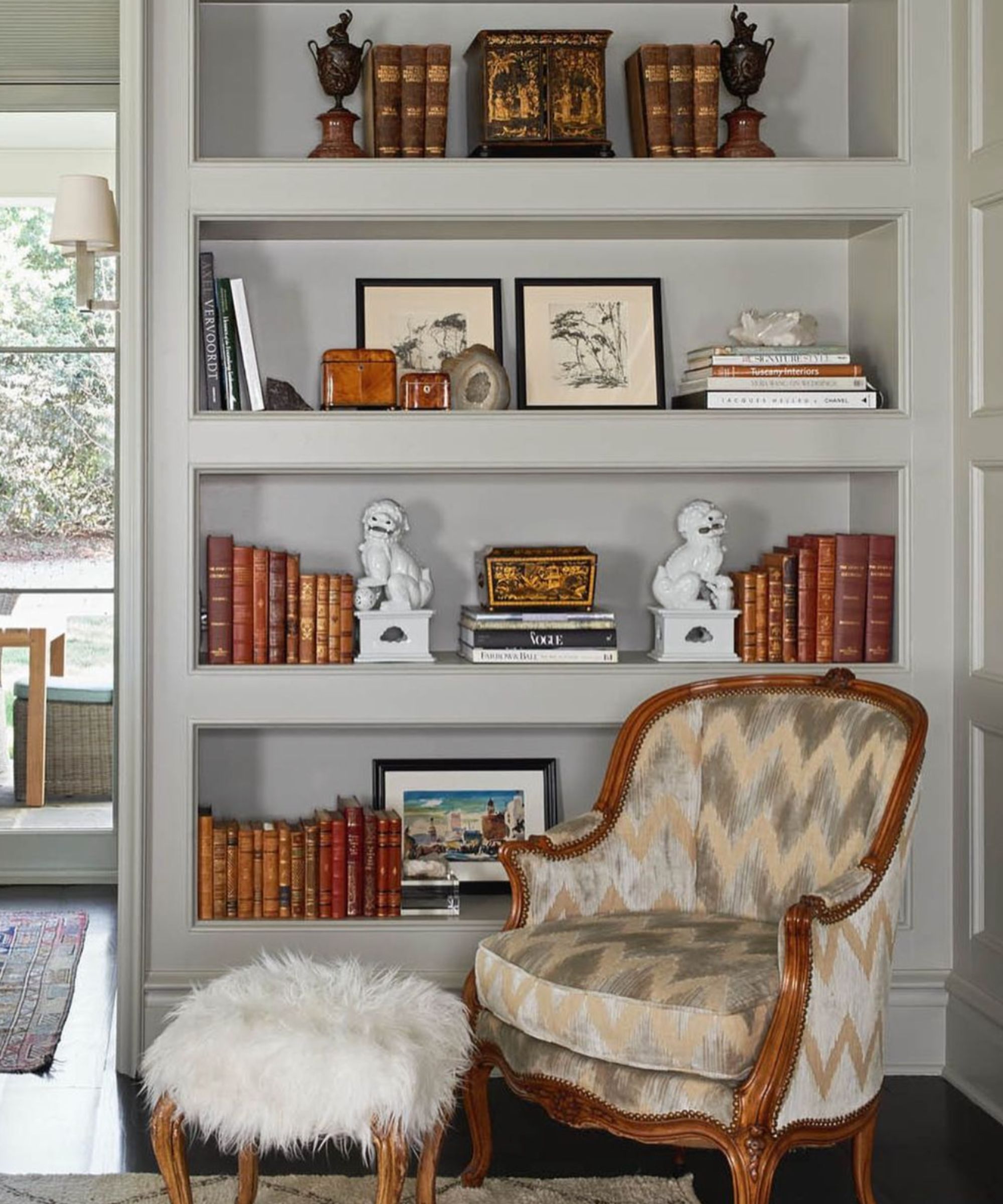
Styling a bookshelf sounds simple, but it is a practiced art. Organizer and home stager Barbara Brock suggests breaking down your bookshelf into zones to help create balance. This ensures your books are still aesthetically pleasing to look at even when there is no obvious sorting method such as color-coding.
‘The various methods of displaying books are upright or horizontal. Whether upright or horizontal, the method to display books is by height,’ she begins. ‘To style books on a shelf, you have a left hand, a right hand, and a middle area for display.’ You should try to display something within each of these areas, styling the small groups independently but using similar decor pieces and color schemes to make it look cohesive, she explains.
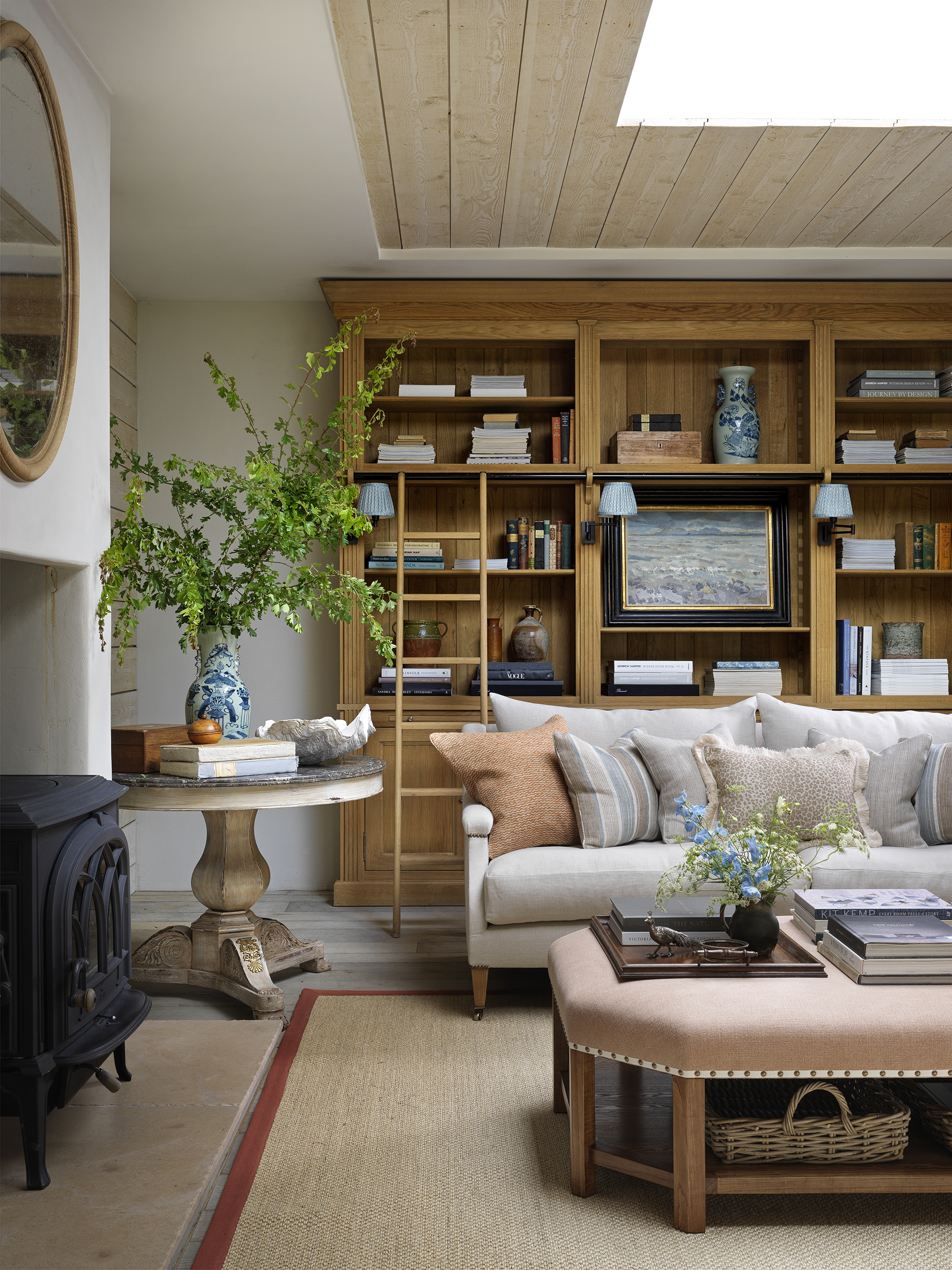
‘For example, a left-hand display may consist of books standing up-right or a composite of standing books and books laying down (horizontal) with their spine facing outwards. An object on top of the horizontal books makes for an appealing, eye-catching display.
‘With displaying books in the “middle” of the shelf, I use a stacked approach with the largest horizontal book on the bottom. Other books will be stacked on top of that. Use both sides for displaying objects of art.’
FAQs
What is the most common way to organize a bookshelf?
By far the most common way to organize bookshelves is to work in categories by alphabetical order of author's name, says Barbara Brock, professional organizer and home stager. ‘Libraries catalog books in the stacks by author. But bookstores organize first by category, then author, then title.’ This makes books easy to find while keeping any series together.
How do you make a bookshelf look expensive?
To make a bookshelf look expensive add in items that aren't books. Combining a well-organized and expansive book collection (preferably hardcover) with vignettes of decor, such as frames, bowls, and sculptural art pieces is the best way to add some intrigue.
What really matters is that you curate shelves that are easy to navigate and you only keep the books you enjoyed or will read – remembering to declutter books you won’t touch again (even if they look nice). There are plenty of things to do with the items you declutter, from donating them to charities or schools or selling them to fund your future book spending habits.
Sign up to the Homes & Gardens newsletter
Design expertise in your inbox – from inspiring decorating ideas and beautiful celebrity homes to practical gardening advice and shopping round-ups.

Chiana has been at Homes & Gardens for two years and is our resident 'queen' of non-toxic living. She spends most of her time producing content for the Solved section of the website, helping readers get the most out of their homes through clever decluttering, cleaning, and tidying tips. She was named one of Fixr's top home improvement journalists in 2024.
-
 This once-dated kitchen is now a timeless space with the coziest details – and its the classic color palette that's made it a chic, welcoming space
This once-dated kitchen is now a timeless space with the coziest details – and its the classic color palette that's made it a chic, welcoming spaceWarming colors and natural materials combine to create this enduringly classic kitchen scheme
By Molly Malsom Published
-
 How to grow crepe myrtle in pots – and transform even the smallest of yards with dazzling flowers this summer
How to grow crepe myrtle in pots – and transform even the smallest of yards with dazzling flowers this summerGrowing crepe myrtles in pots will inject splashes of brilliant color into your outside space
By Thomas Rutter Published
